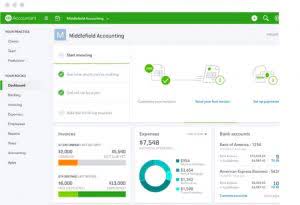Content

The amount of taxes you either owe or are due is directly attributed to the information on your W-4 form. (c) Here you will enter any other extra withholdings you want to be withheld from each paycheck. There is one final step that employers must fill out once they receive a completed form from an employee. The employer should enter the name of their organization and its address, the employee’s first date of employment, and their employer identification number (EIN). Form W-4 is crucial to employee tax reporting and employer withholding.
Just like it’s important for only one spouse to allow for child-related tax credits on their W-4, it’s important that you only allow for other income or deductions on one W-4. While you can stop here and allow your employer to simply withhold at default levels, the easiest path may not be the best. To get the right balance between paycheck and your refund, you might need to complete one or more additional steps – especially if you want to avoid surprises when you file. Form W-4 is an IRS form that you complete to let your employer know how much money to withhold from your paycheck for federal taxes. To accurately fill in line 1, you’ll need to use the graphs provided on page four of Form W-4. These graphs are separated out by filing status, so you’ll need to select the correct graph based on how you file your taxes.
Personal Information (Step
Detailed directions on completing this step are outside the scope of this article, but feel free to review the worksheet and other IRS publications for assistance. You’ll either have a number in line 1 or in line 2c above. Take that number and divide it by the number you put in line 3.

If you are exempt from tax withholding, you only need to complete Step 1(a), Step 1(b), and Step 5 — and then you can write “Exempt” on Form W-4 in the space below Step 4(c). Generally, you can only claim exempt if you don’t have any tax liability, meaning you didn’t owe any tax last year due to earning income, or you didn’t need to file a tax return at all. Believe it or not, you might be https://simple-accounting.org/bookkeeper360-app-xero-integration-reviews/ able to jump to Step 5 at this point, sign and date the form, and be done with it! You only need to complete steps 2 through 4 if they apply to you. If you are single with no dependents, or married filing separately with no dependents, you don’t need to complete steps 2 through 4 as you’ll be taxed accordingly. It might be worth skimming them anyway to make sure nothing applies to you.
Updating Your W-4 Form
Or you could set the rate now and just make an estimated tax payment to cover the difference. Whether you’re paid a salary or by the hour, if you are single and working full time, you’re going to check the box that says single and claim one allowance on line 5. The new Form W-4 is a bit easier to understand because each section shows why adjustments are being made. There are now three main sections used to help determine your withholding. You only complete each section if it applies to your situation. • If you work multiple jobs at the same time or are Married Filing Jointly and both you and your spouse are employed, you should fill out a new Form W-4 for each job.
But you can also change your W4 at any time if you change your mind about the withholdings you do or don’t want on each paycheck. Specifically, new hires must complete Form W-4 before they can receive their first paycheck. To stay compliant, most employers provide Form W-4 during onboarding, along with Form I-9. Employers calculate payroll taxes based on an employee’s W-4 and make state and federal tax payments on the employee’s behalf. Filling out Form W-4 incorrectly could result in substantial tax obligations—plus penalties and interest—when an employee files their annual tax return, which depends on an employer-provided Form W-2. Form W-4—also known as Employee’s Withholding Certificate—is an IRS tax document employers use to determine how much of an employee’s wages to withhold from each paycheck for income taxes.
Unemployment Benefit Payments
This form is for your employer, to make sure you are withholding income correctly to pay your taxes. Don’t make the big mistake of dismissing the W-4 form as just “new-job paperwork.” Based on annual life and tax changes you should review your Form W-4 each year and update when necessary. Keeping your W-4 current The Ultimate Guide To Bookkeeping for Independent Contractors and accurate could keep you from a surprise tax bill when you file. As with Step 3, if you’re filling out this W-4 for the lower-paying of your multiple jobs, you should skip this section. Alternatively, if you’re working on the W-4 for the lower-paying of your multiple jobs, you should skip this section.

Whenever you run into any major life changes, you’ll want to update this form, too. Obviously, if you get a new job, you’ll fill out a new one, but if you get married, have a kid, or get a second job, you’ll ask for a new W-4, then adjust accordingly. Finally, try to remember to complete a new W-4 when you experience a major life change. A new child, a significant increase or decrease in income from you or your spouse, or a divorce are all examples of major life changes that might be flags to complete a new W-4. When you finish gathering the annual wage for both jobs, you’ll have two numbers, one from each job. Now go to the tax tables on page 4 and find the correct section for your tax filing status.


